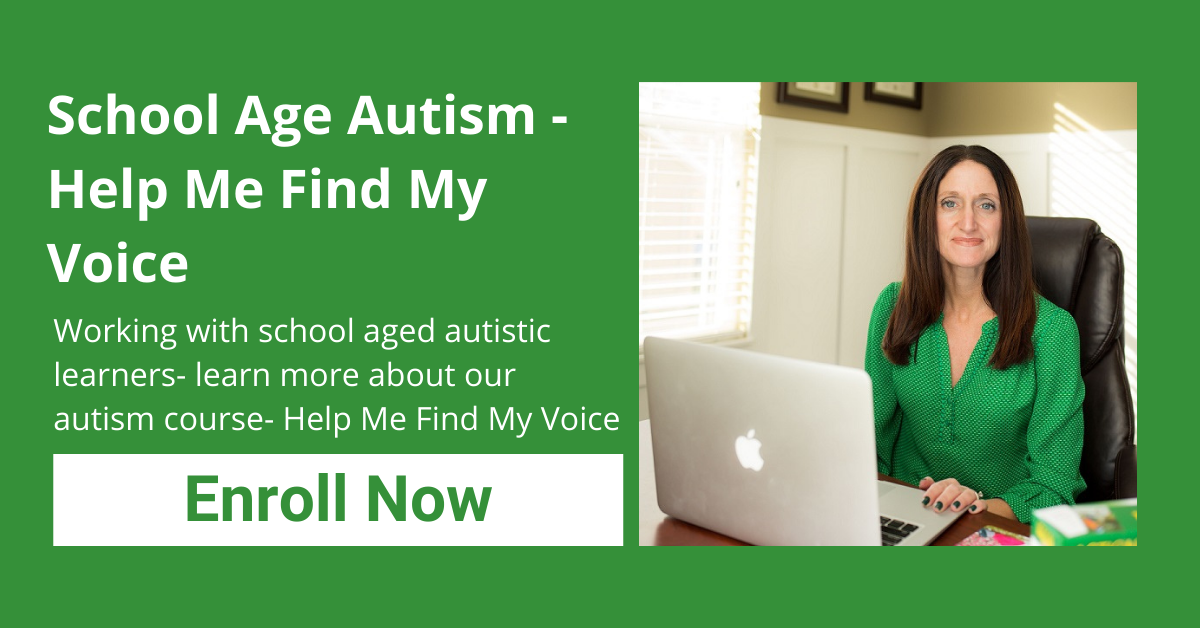“Well, I guess you better figure it out”....
Episode #054: Autism Assessment
https://youtu.be/vCy585jLtzo
NEW: 1.0 ASHA CEUs available!
Listen and earn CEUs for select Autism Outreach podcasts when you join SpeechPathology.com
Enter promo code: AUTISM
Assessments are extremely necessary for understanding the skill set of your learner, setting goals, and making meaningful progress. As a therapist, administering these assessments can be so overwhelming and frustrating, especially when your students have complex needs and are not able to meet the standardized completion. Today, I am sharing my top 5 tips and strategies for autism assessments to make assessments a positive tool in your goal setting for therapy.
1. The Functional Communication Profile – Revised
A readily available, informal but thorough assessment. I love this assessment because it looks at a student’s ability to attend to a task, receptive language, expressive language, and social language. The FCPR gives a great baseline for your student’s overall speech skills. Most speech therapists have it right in their therapy office, it’s been around for a while and it is available through a variety of distributors.
2. VB-MAPP
The Verbal Behavior Milestones Assessment and Placement Program really streamlined my process for my students who were autistic or had complex communication needs. The information that a VB-MAPP will give you is so necessary for goal setting. It’s broken into three developmental levels, Level 1: 0-18 months, Level 2: 18-30 months, and Level 3: 38-40 months.
3. Informal Screeners
In my ASHA approved programs Start Communicating Today and Help Me Find My Voice, I include informal screeners. These have been put together based on my 20 years in the field and what I find helpful to look at. For students with complex needs, these screeners help take a clear look at foundational skills. Also for older students, these screeners can facilitate questions like what have we tried before and how did that go? This is a great supplement for the road map to progress alongside formal assessments.
4. Observation
Observation makes up a gold standard assessment. Spontaneous communication can be notated just on pen and paper. This can be during structured or unstructured time, preferably both, so you can understand the different modes and attempts for the students’ communications in different settings. The most valuable information comes from the questions, what does my student look like as a communicator in these different areas?
5. Parent or Team Interview
Talk to the team of teachers working with the student and talk with the parent. Sometimes teachers are the lead on a case and may be sending home forms that include really valuable information. Also, talking to the parents is crucial because it’s important to understand where they are coming from and what their concerns may be. Communication with the team will also facilitate understanding progress being made across the students’ environment.
#autism #speechtherapy
What’s Inside:
- Top 5 tips and strategies for autism assessment.
- How to get a robust assessment for goal setting.
- How to build a step-by-step road map for meaningful progress for your learners.
Mentioned In This Episode
— @ABASpeechByRose
— ABA SPEECH Your Autism Resource
Rate, Review & Subscribe
If you found this podcast helpful, please consider rating and reviewing my show! This helps me to support support more people — just like you!
If you have not done so already, subscribe to the podcast. This ensures that you do not miss an episode!
Listen on
Apple Podcasts
Listen on
Stitcher
Subscribe
via Email
You Might Also Like…
Episode #185: Replay: The Power of Joint Attention
Enjoy this replay from episode 62. Joint attention is...
Episode #184: 5 Tips For Dealing With Contentious IEP Meetings
Conflict is part of what we do...

